PROTECT YOUR DNA WITH QUANTUM TECHNOLOGY
Orgo-Life the new way to the future Advertising by Adpathway
Thousands of Black Kites (Milvus migrans) are currently held up on the European shore of the Strait of Gibraltar. This is normal at this time of the year when strong easterly winds may blow for days on end, making a crossing of the sea impossible. The birds attempt to cross but have to give up, landing on the ground or anywhere safe and suitable. The following day the attempt is repeated, this time with more birds that have arrived from the north. As the days go by, the accumulation reaches spectacular dimensions. So does the day the wind finally calms down and a river of raptors flows from one continent to another.
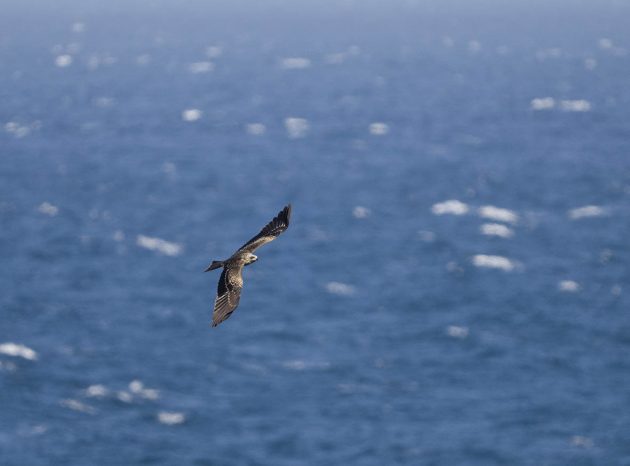 Juvenile Black Kite attempts the sea crossing in strong winds and is forced back
Juvenile Black Kite attempts the sea crossing in strong winds and is forced back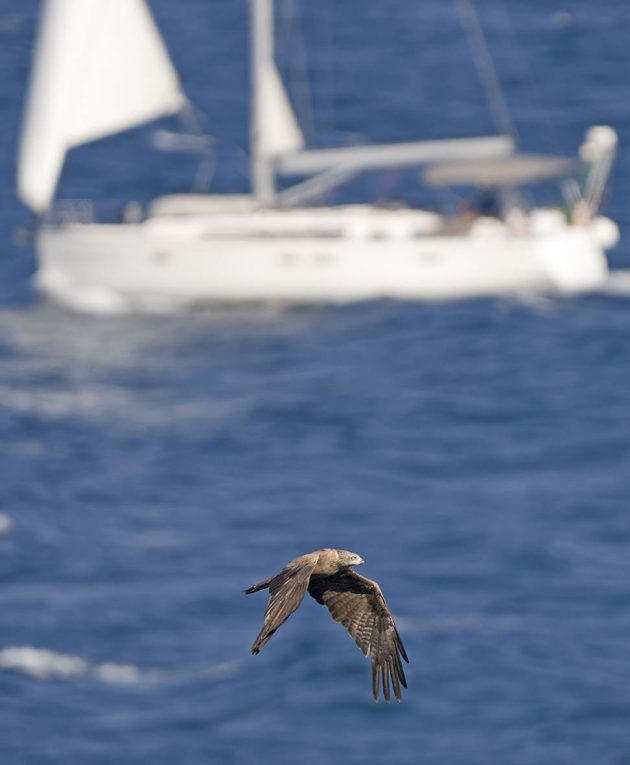 Crossing the sea is not something soaring birds like to do. On migration they sometimes have to, like this Black Kite at Gibraltar
Crossing the sea is not something soaring birds like to do. On migration they sometimes have to, like this Black Kite at Gibraltar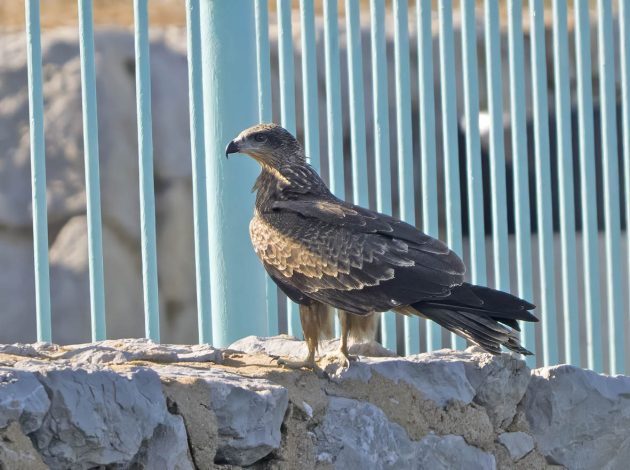 Grounded juvenile Black Kite
Grounded juvenile Black Kite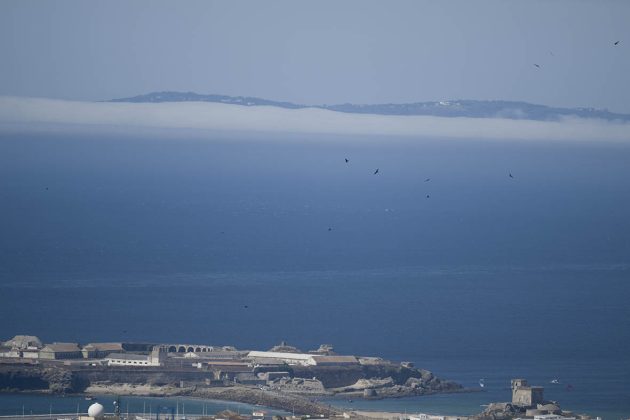 Black Kites soaring over the European shore of the Strait of Gibraltar with the North African coast, tantalisingly close, in the background
Black Kites soaring over the European shore of the Strait of Gibraltar with the North African coast, tantalisingly close, in the backgroundThe idealised scheme of raptors soaring on thermals on one side of the sea and then gliding effortlessly to the other shore only happens on calm days or with light winds. Like so many aspects of natural history, the exception is very often the rule. This is certainly the case in the Strait of Gibraltar where winds from the east or the west regularly force raptors to land or to make the crossing by flapping and not gliding, a dangerous tactic that doesn’t always end well for the birds.
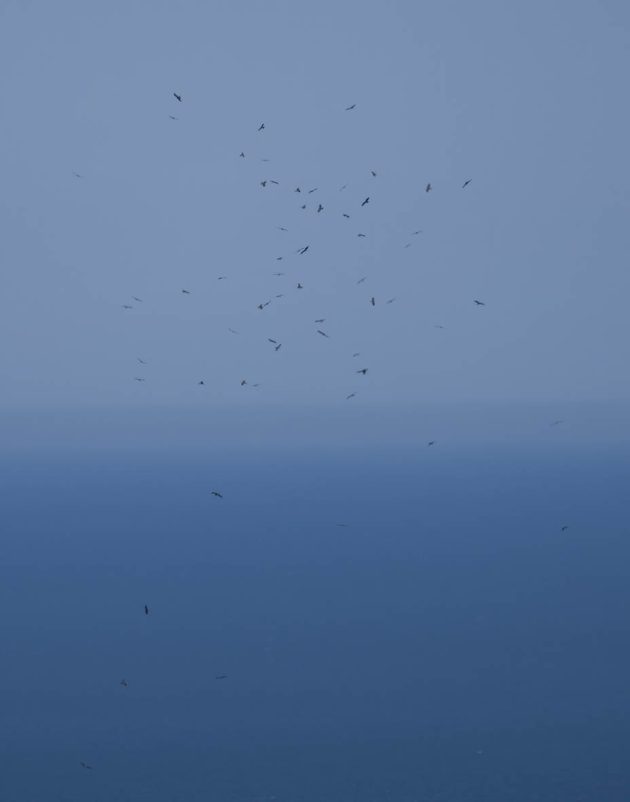 Black Kites rising on thermals in light winds
Black Kites rising on thermals in light winds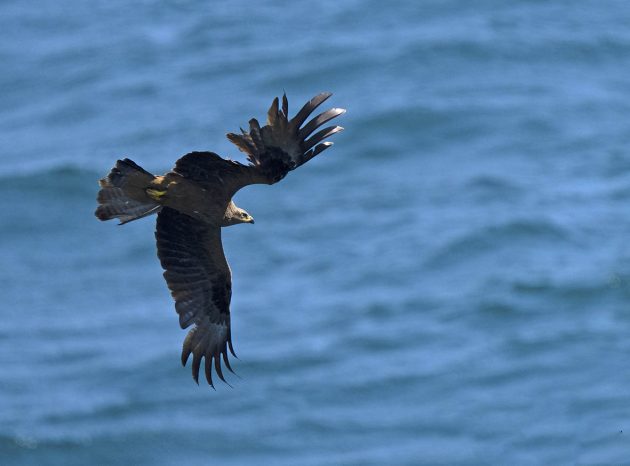 Adult Black Kite crossing the sea with missing flight feathers
Adult Black Kite crossing the sea with missing flight feathers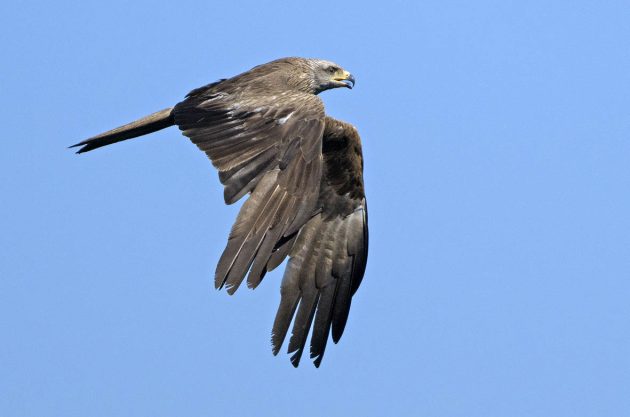 Adult Black Kite, panting with exhaustion, crossing the Strait of Gibraltar. This bird has started moulting the inner primaries
Adult Black Kite, panting with exhaustion, crossing the Strait of Gibraltar. This bird has started moulting the inner primariesThe first contingents of Black Kites are birds from the Iberian Peninsula. They arrived in February and are now escaping the summer dry season. The adults start the moult in the breeding grounds, so many pass with some freshly-moulted flight feathers but most are in tatty condition at the end of the breeding season. This adds to the difficulty of getting across to the other side and shows just how much pressure these birds are under in order to complete their migration schedule. In contrast, the juveniles are in fresh plumage with a beautifully scalloped pattern of golden-fringed back, upper wing and upper tail coverts, but they are new at the job and will make life-costing mistakes.
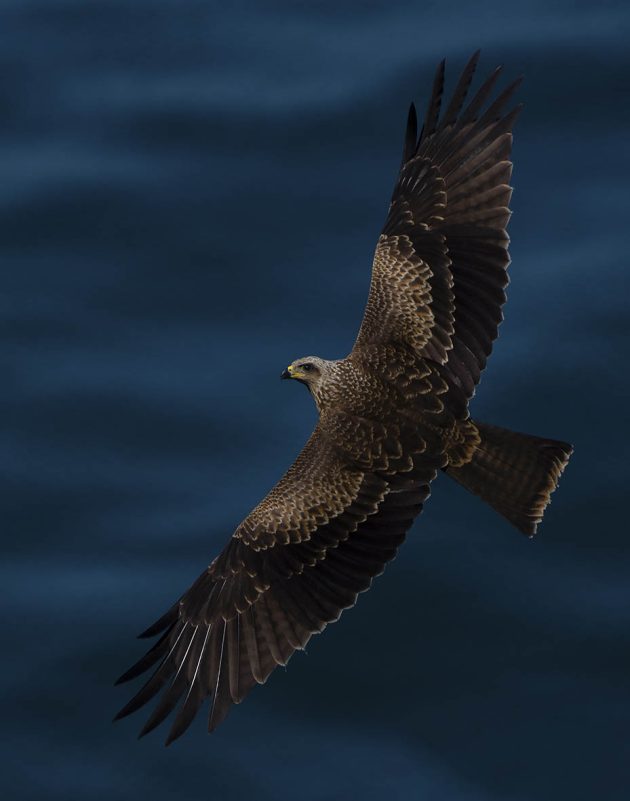 Juvenile Black Kites (above and below)
Juvenile Black Kites (above and below)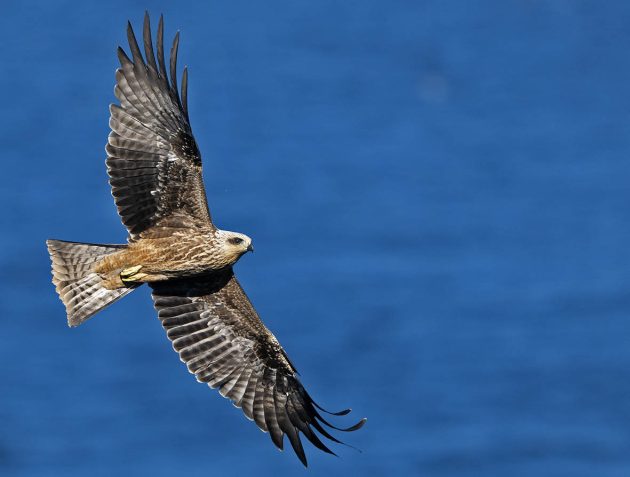
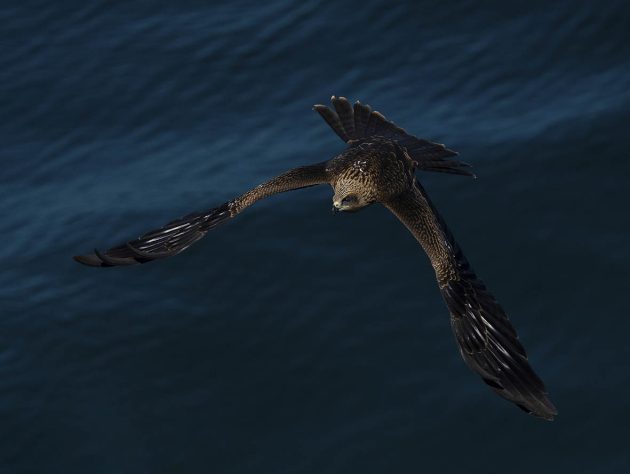
It never ceases to amaze me how these juveniles, only eggs a short while ago, are ready to make the arduous journey with all its hazards. From here they need to circumvent the Atlas Mountains, then cross the Sahara Desert before reaching their destination in the Sahel, where their arrival coincides with the onset of the rains. Black Kites are the first raptors to head south. Over the coming months, we will be treated to a spectacle as different species make their way south.
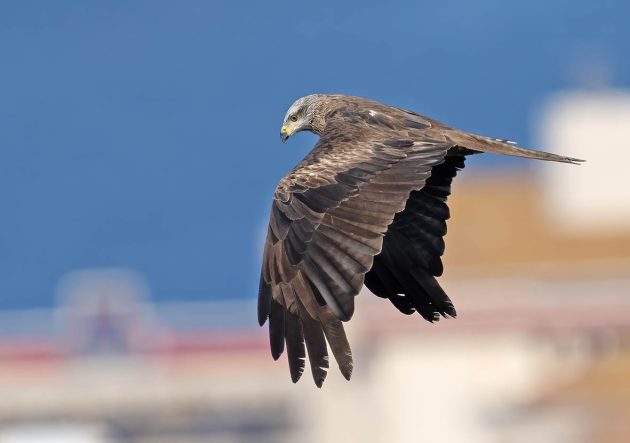 Adult Black Kite with freshly-moulted inner primaries
Adult Black Kite with freshly-moulted inner primariesWritten by Clive Finlayson
Growing up in Gibraltar, it is impossible not to notice large birds of prey, in the thousands, overhead. That, and his father’s influence, got Clive hooked on birds from a very young age. His passion for birds took him eventually to the Edward Grey Institute of Field Ornithology at Oxford University where he read for a DPhil, working with swifts and pallid swifts. Publishing papers, articles and books on birds aside, Clive is also a keen bird photographer. He started as a poor student with an old Zenit camera and a 400 mm lens; nowadays he works with a Nikon mirrorless system. Although his back garden is Gibraltar and the Strait of Gibraltar, Clive has an intimate knowledge of Iberian birds but his work also takes him much further afield, from Canada to Japan to Australia. He is Director of the Gibraltar National Museum. Clive's beat is "Avian Survivors", the title of one of his books in which he describes the birds of the Palaearctic as survivors that pulled through a number of ice ages to reach us today.







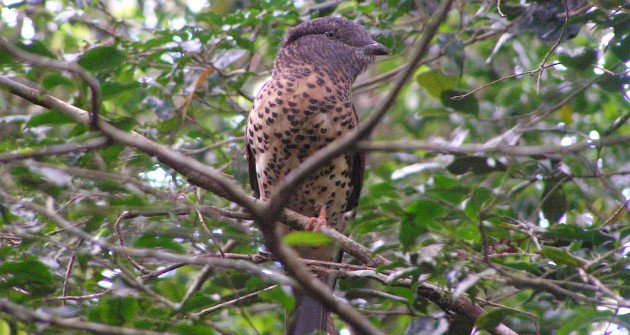















 English (US) ·
English (US) ·  French (CA) ·
French (CA) ·